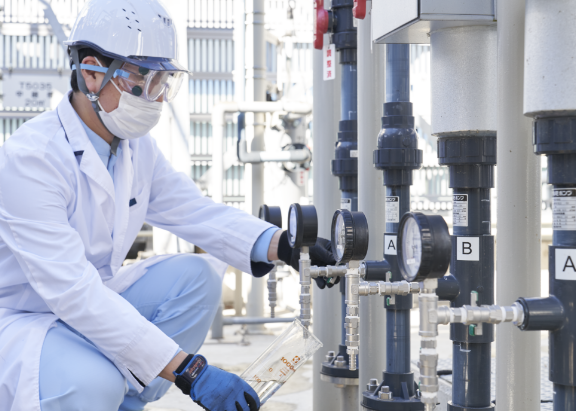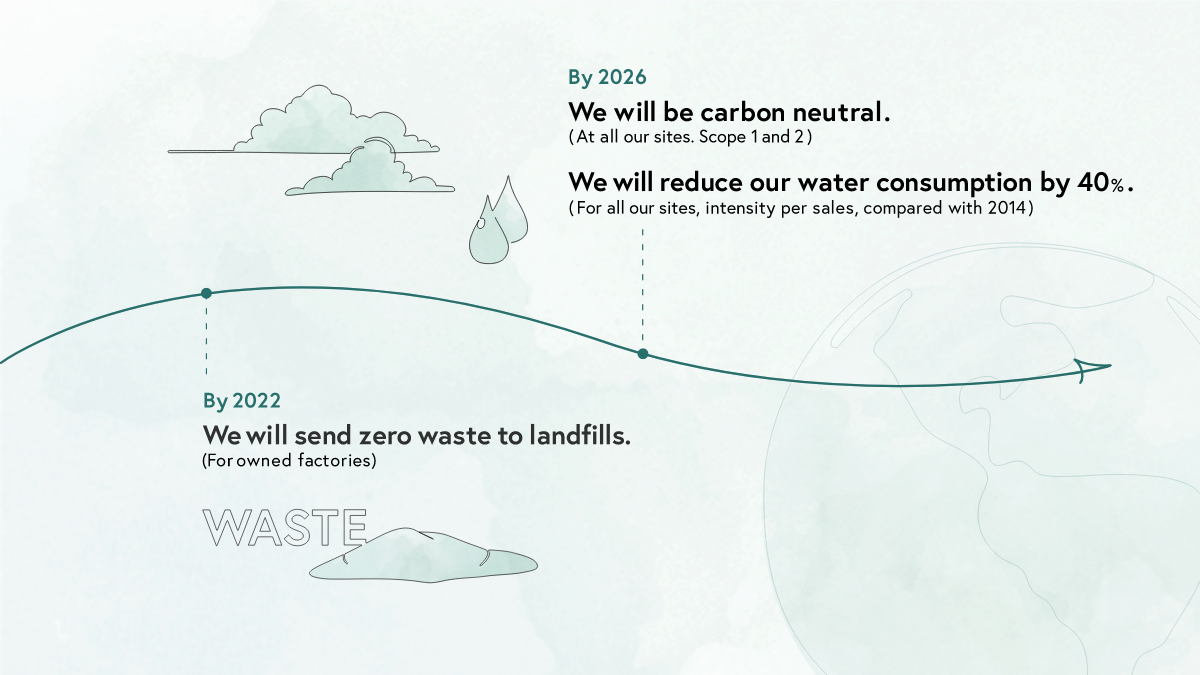Water Saving Initiatives
We are working to reduce water consumption at all our factories. As each site has various facilities and equipment tailored to the kind of cosmetics they produce, initiatives are specifically designed for each factory. For example, at our Gien factory in Europe — where there are concerns that rainfall will decrease — we switched from water to alcohol for cleaning fragrance product manufacturing equipment and resin skids. All alcohol used in the process is purified and reused repeatedly. We are also saving water by introducing automatic washing equipment in manufacturing facilities and consolidating the washing locations of equipment parts. In addition, we strive to educate and enlighten our employees on environmental issues, including water saving.
Utilizing Water Resources
In collaboration with local stakeholders, we promote “Water Stewardship”— the concept of managing water resources as a common property within the same river basin. To make effective use of water, we focus on circular usage, where used water is purified and reused or recycled.
At our Osaka Ibaraki factory (Japan), we introduced a circulation-type system using recycled water as a cooling medium. This could lead to an annual reduction in water of 65,000㎥. At our Nasu factory (Japan), we use the high-quality groundwater for manufacturing processes and as a raw material for cosmetics. In consideration of the natural environment, the Nasu factory has also established its own strict standards to control discharged water, thereby minimizing any impact on the local ecosystem.


Engaging Stakeholders
In cooperation with our stakeholders, we conduct water footprint assessments to understand the environmental impact of water usage throughout the value chain. We utilize the latest knowledge and findings on hydrology and climatology to gain a better understanding of water as a resource, including availability and future projections in relation to climate change. As results suggest that a large environmental impact occurs during the raw material procurement stage, we ask our suppliers to provide information on their water usage through self-assessment.
At our Shanghai factory in China — a country affected by high water stress — we participate in a local environmental protection association and proactively obtain environmental information (including wastewater treatment and gray water recycling) such as environmental laws and regulations surrounding factory activities. We also report monthly water consumption to the government, which promotes water conservation and is working to improve water utilization rates and strengthen water conservation management.






